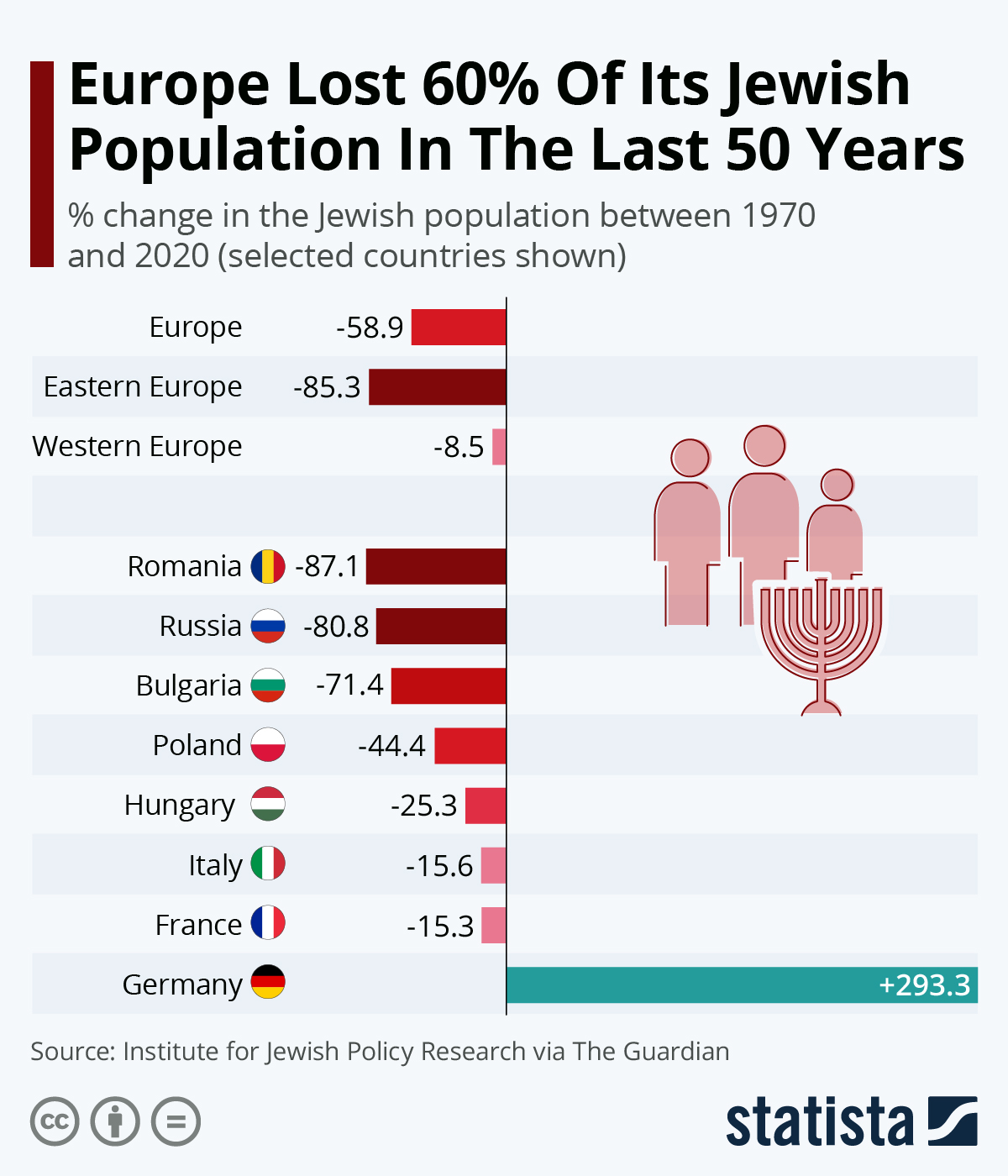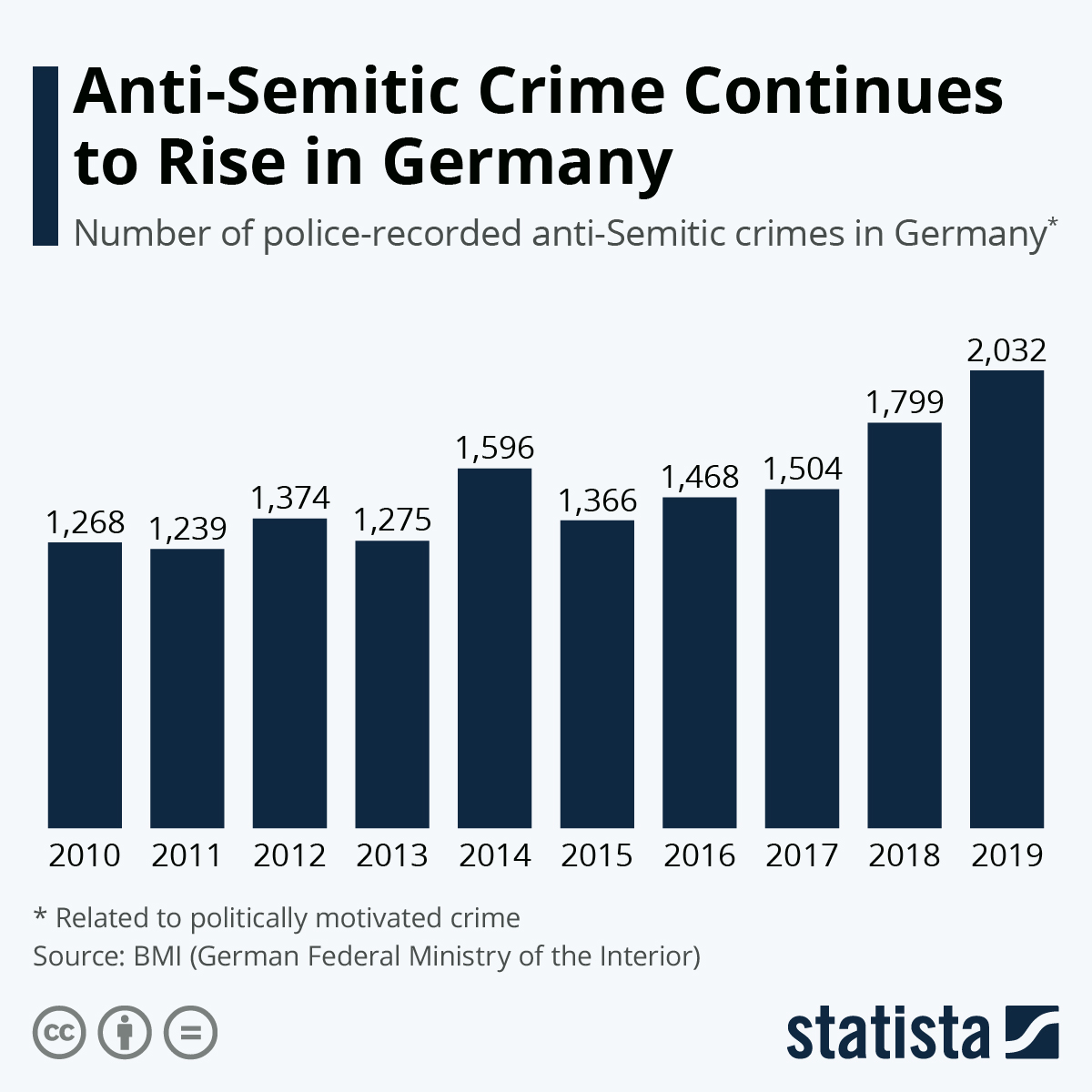Europe has lost 60 percent of its Jewish population since 1970 according to a new study by the London-based Institute for Jewish Policy Research. Its key findings were published by The Guardian with the decline attributed to the collapse of the Soviet Union which resulted in many Jews leaving Eastern Europe as borders were opened. Across Eastern Europe, the Jewish population fell 85.3 percent over the past 50 years while Western Europe has experienced an 8.5 percent decline.
According to the Guardian, only about 9% of the global Jewish population now lives in Europe, compared with nearly 90% in the late 19th century – but similar to the proportion 1,000 years ago.
Will you offer us a hand? Every gift, regardless of size, fuels our future.
Your critical contribution enables us to maintain our independence from shareholders or wealthy owners, allowing us to keep up reporting without bias. It means we can continue to make Jewish Business News available to everyone.
You can support us for as little as $1 via PayPal at office@jewishbusinessnews.com.
Thank you.
It is estimated that 1.3 million Jews live in Europe in 2020 with two-thirds of that total living in France, Germany, and the United Kingdom. As this infographic shows, Russia’s Jewish population contracted by 81 percent between 1970 and 2020 while Poland experienced a 44 percent drop. The disappearance of the USSR has led to a considerable increase in Germany’s Jewish population which has climbed 293 percent over the past five decades.
 You will find more infographics at Statista
You will find more infographics at Statista
Anti-Semitic Crime Continues to Rise in Germany
But this attack came out of nowhere. Anti-Semitic crimes have increased each year since 2015 in Germany. According to the latest report by the Federal Ministry of the Interior (BMI), 2019 saw the highest number of such police-recorded crimes since the country started recording them in 2001.
 You will find more infographics at Statista
You will find more infographics at Statista
Politically motivated crime in Germany – Statistics & Facts
The German Bundeskriminalamt (BKA, Federal Criminal Police Office) defines politically motivated crime, in summary, as those criminal offenses which aim at achieving or hindering political aims, are against the free basic democratic order and directed against other people for reasons having to do with their political views, nationality, ethnic background, skin color, religious affiliation, social status, physical and mental disabilities, sexual orientation or appearance. Specific criminal acts are then divided into politically motivated crime based on the concrete motivation and targets of the criminal: left-wing, right-wing, foreign, and religious ideology. According to the BKA, terrorist acts represent the most extreme form of politically motivated crime. The total number of recorded politically motivated criminal offenses in Germany has fluctuated in the last 15 years, peaking in 2016 at 41,549. Politically motivated criminal offenses also include violent offenses.
Right-wing extremism
The number of right-wing extremists in Germany has generally grown in recent years. These are divided by the type of organization to which they belong and the ideology for which they express support. In 2019, there were 13,000 right-wing German extremists classified as violence-oriented or “ready for violence”. That same year, 22,342 right-wing criminal offenses were recorded in Germany, as well as 986 right-wing violent acts. Of criminal offenses with a right-wing extremist background, by type, the highest number of offenses related to propaganda. Right-wing extremist criminal offenses also include acts against German asylum homes, with 161 recorded offenses in 2018. Of these, 13 were violent.
Left-wing extremism
The number of left-wing extremists in Germany has also grown across different categories since 2016, amounting to 34,500 in 2019. Of these, 900 were classified as anarchists, and 9,200 were considered violence-oriented. The number of left-wing extremist criminal offenses recorded in 2019 amounted to 6,449. Of these, 921 were violent. Both figures were lower than the previous year. Of non-violent left-wing extremist criminal offenses, the most common type recorded in 2019 was property damage, at 3,520 cases. That same year, among violent acts, the highest number was committed against police and law enforcement at 467.




